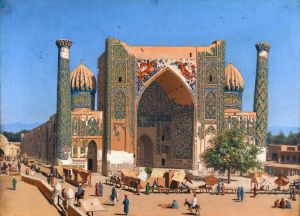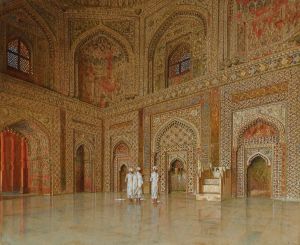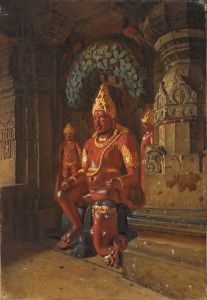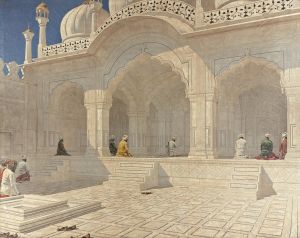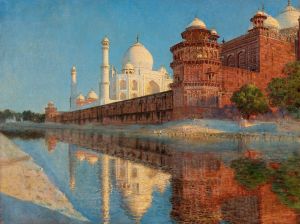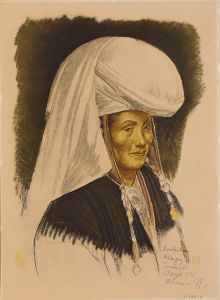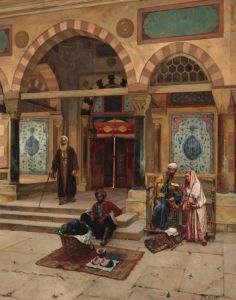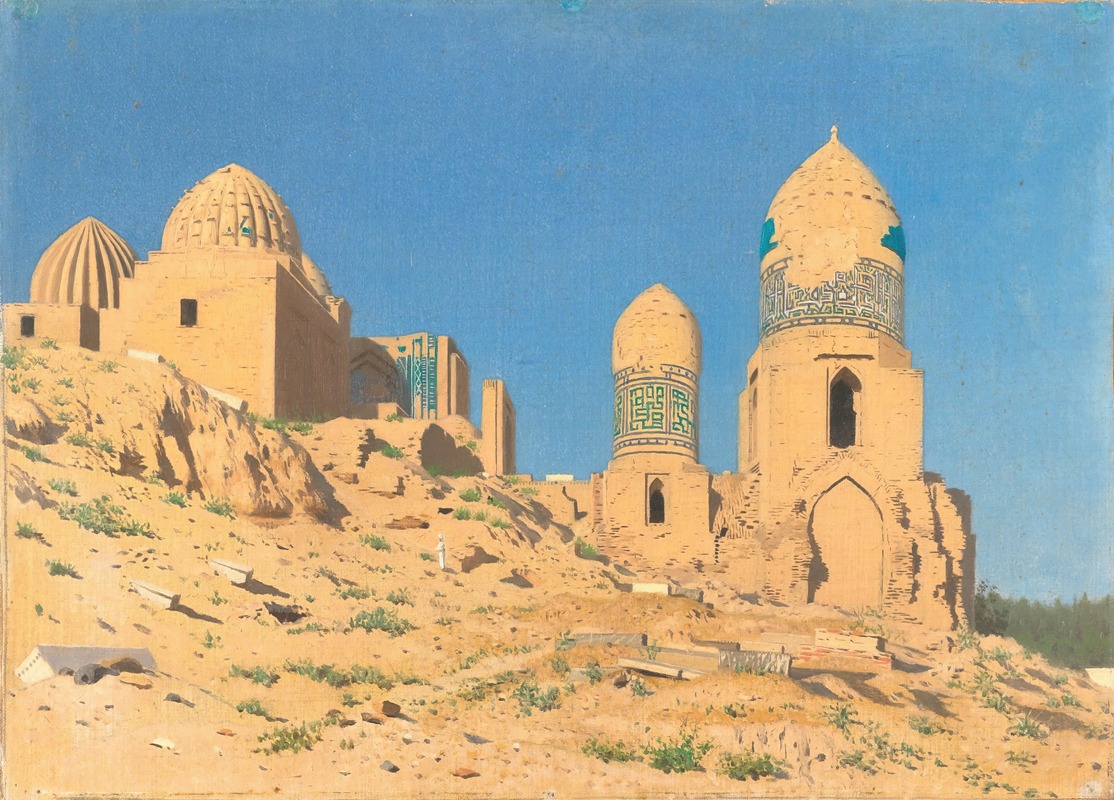
Shah-i-Zinda Mausoleum in Samarkand
A hand-painted replica of Vasily Vereshchagin’s masterpiece Shah-i-Zinda Mausoleum in Samarkand, meticulously crafted by professional artists to capture the true essence of the original. Each piece is created with museum-quality canvas and rare mineral pigments, carefully painted by experienced artists with delicate brushstrokes and rich, layered colors to perfectly recreate the texture of the original artwork. Unlike machine-printed reproductions, this hand-painted version brings the painting to life, infused with the artist’s emotions and skill in every stroke. Whether for personal collection or home decoration, it instantly elevates the artistic atmosphere of any space.
Vasily Vereshchagin, a prominent Russian painter and one of the most renowned war artists of the 19th century, created the painting Shah-i-Zinda Mausoleum in Samarkand during his travels in Central Asia. Vereshchagin is well-known for his detailed and realistic depictions of historical and cultural landmarks, as well as his critical portrayals of war and imperialism. This particular work is part of his Turkestan Series, which he produced after accompanying Russian military campaigns in the region during the 1860s and 1870s.
The painting depicts the Shah-i-Zinda necropolis, a significant architectural and cultural site in Samarkand, Uzbekistan. Shah-i-Zinda, meaning "The Living King," is a complex of mausoleums and religious structures built between the 11th and 15th centuries. It is one of the most important examples of Islamic architecture in Central Asia, known for its intricate tilework, vibrant colors, and harmonious design. The site is traditionally associated with Qutham ibn Abbas, a cousin of the Prophet Muhammad, who is believed to have brought Islam to the region.
Vereshchagin's painting captures the grandeur and intricate details of the mausoleum complex, emphasizing its architectural beauty and historical significance. His work reflects a deep appreciation for the cultural heritage of the region, showcasing the vivid blues and greens of the tiles, as well as the ornate patterns that adorn the structures. The painting is notable for its precision and attention to detail, qualities that characterize much of Vereshchagin's work.
Vereshchagin's Turkestan Series, including Shah-i-Zinda Mausoleum in Samarkand, played a significant role in introducing Central Asian culture and architecture to a broader audience in Russia and Europe. His works were widely exhibited and helped to foster an appreciation for the artistic and historical achievements of the region. At the same time, Vereshchagin's paintings often carried a sense of critique, reflecting the complexities of Russian imperial expansion into Central Asia.
Today, Shah-i-Zinda Mausoleum in Samarkand is regarded as an important example of Vereshchagin's ability to document and interpret the cultural and historical landscapes he encountered. The painting serves as both an artistic masterpiece and a historical record of one of Central Asia's most iconic landmarks.






